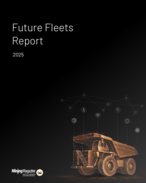Despite the debate around the boom, there is little doubt that Australian exporters are under pressure – with a declining iron ore price, increased production volumes from lower-cost producers, long-term decline in ore grades, and an increase in the level of impurities for junior miners making an impact.
This has put cost reduction in the spotlight, with sustainable policies covering operational efficiency and cost rationalisation more important than ever for both miners and mining service companies alike in order to remain profitable
As a result response programs such as redundancies, capital expenditure rationalisation, forced rate reductions and strategic sourcing have increasingly become the norm, and will need to continue to play an important part in the industry in the longer term.
Back when iron ore contract prices were set annually, based on demand from Japan and China, most Australian mining companies were able to set their own terms and budget based on the annual price entered into for exports.
This began to shift in 2009 as contracts moved from annual to quarterly pricing, then down to monthly pricing in 2012, which increased the volatility of the commodity markets and took control away from Australia.
The true impact of this shift hit in September 2012, when prices for iron ore dropped below $US90 a tonne. The market reacted in shock, despite China having signalled demand was slowing, but the big miners reacted swiftly; recruitment was frozen, redundancies made and non-essential projects stopped.
Major corporates also appointed either a chief procurement officer or one of the large consulting firms to review procurement practices and to drive out excess costs. This included the first wave of rapid sourcing programs where major miners told all suppliers costs had to be cut by 15-20%.
To realise this level of savings, sourcing levers were used – including volume aggregation, specification change and demand management – along with changes to existing procurement operating models.
Since those initial reactions, rate reductions have been pushed down the supply chain, but only small savings are being achieved as margins for smaller providers become tighter.
Two years later and the market is signalling iron ore prices to shift downward to five-year lows due to an oversupply of ore in the market. So what’s next?
The industry has started to look for more sustainable approaches to controlling costs including strategic sourcing programs. These programs have seen companies review all critical spend in detail, down to individual stock levels; they have considered the specifications required to complete tasks; reviewed demand management; considered alternative sourcing; and worked towards maximising efficiencies by economies of scale.
This has caused disruption in the mining industry with companies aggressively targeting spend reductions through avenues not considered by the industry before. For example, a renewed focus on cross-project supply consolidation and fewer, longer term strategic supplier relationships have been driving outcomes.
Companies are also successfully continuing to reduce controllable costs. Some miners have transitioned to owner-operator models, contractors are working collaboratively with miners to reduce rates and improve productivity, capital expenditure is being scrutinised as asset lives are extended, and non-core activities being reviewed.
While these are all measures have been used before, the Australian market is also evolving in response to new threats to profitability with changes in service supply contracts and a shift linking risk and reward towards an average quarterly spot price.
Supply contracts are starting to change towards miners, actively encouraging higher levels of collaboration from those who contribute to the pit-to-port process with the introduction of cost recovery in margin key performance indicators in an effort to drive efficiencies, accountability and sustainability of the whole supply chain.
These policies and programs need to become part of a new mining industry culture. This way operational efficiency, management effectiveness and sourcing efficiencies will become embedded in company behaviour rather than used as reactive programs, ensuring a long term and sustainable junior mining sector.
To date, most mining and mining services companies have been able to manage the rebalancing of the demand and supply of their own services and the demand and supply of services and materials they require, and the impact on costs and margins.
However, the pressure to further reduce margins and increase productivity may put strain on companies which are not proactively managing their own cost structures.
When facing a squeeze on margins, it is important for such companies to focus on cash generation and ensure they have sufficient liquidity to manage through these challenges. Nothing is truer in these challenging times than the old adage “cash is king”
Gary Doran is a restructuring partner at Deloitte in Perth.
























